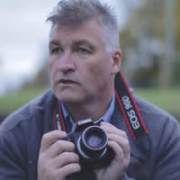

SolarWinds Virtualization Manager and Veeam Data Platform compete in virtualization management and data protection. Veeam Data Platform holds an edge due to its comprehensive data protection capabilities.
Features: SolarWinds Virtualization Manager focuses on real-time monitoring, capacity management, and optimization, offering tools crucial for managing virtual environments effectively. Veeam Data Platform provides comprehensive backup, replication, and disaster recovery, with features like instant recovery and SureBackup ensuring minimal downtime and robust data protection.
Room for Improvement: SolarWinds Virtualization Manager could enhance its data protection features to compete more broadly against Veeam. Improvements in integration for multi-cloud environments would also be beneficial. Additional user-friendly reporting features may improve user experience. Veeam Data Platform could streamline its deployment process, which may be complex for some. Enhanced support for newer virtualization technologies and further cost transparency in pricing models would strengthen its offerings.
Ease of Deployment and Customer Service: SolarWinds Virtualization Manager offers a straightforward deployment process tailored to virtualization, beneficial for quick setup. Veeam Data Platform's intricate deployment reflects the complexity of its features; larger organizations might find the comprehensive setup beneficial. Veeam provides extensive post-deployment assistance, aligning with its multi-layered offerings, notable for larger enterprises with complex needs.
Pricing and ROI: SolarWinds Virtualization Manager presents lower initial costs appealing to budget-conscious buyers, focusing its ROI on resource optimization. Conversely, Veeam Data Platform, despite higher upfront costs, offers significant ROI through its robust data protection and reduced risks of data loss, justifying its value for enterprises prioritizing comprehensive data integrity and security.
| Product | Market Share (%) |
|---|---|
| Veeam Data Platform | 8.8% |
| SolarWinds Virtualization Manager | 9.4% |
| Other | 81.8% |


| Company Size | Count |
|---|---|
| Small Business | 2 |
| Midsize Enterprise | 2 |
| Large Enterprise | 3 |
| Company Size | Count |
|---|---|
| Small Business | 216 |
| Midsize Enterprise | 99 |
| Large Enterprise | 138 |
Veeam Data Platform is designed for modern data management, providing secure backups, intelligent data insights, and resilience. It ensures data is protected, recoverable, and manageable across complex environments, supporting business continuity effectively.
Veeam Data Platform stands out with its robust capabilities in data protection, orchestrated recovery, and efficient management. It offers a simple interface while ensuring data security and availability, which is critical for businesses. The platform's compatibility with virtual machines, databases, and applications across VMware, Hyper-V, and cloud environments makes it a versatile choice for backup and disaster recovery strategies. Users gain confidence from its performance, from secure backups to facilitating effective infrastructure monitoring.
What are the key features of Veeam Data Platform?Veeam Data Platform is widely implemented by industries needing robust disaster recovery plans and data management solutions. It is particularly valuable in environments utilizing hybrid cloud solutions, protecting mission-critical workloads, and ensuring business continuity. Businesses leverage its capabilities to safeguard data integrity and facilitate long-term retention through efficient infrastructure management.
We monitor all Virtualization Management Tools reviews to prevent fraudulent reviews and keep review quality high. We do not post reviews by company employees or direct competitors. We validate each review for authenticity via cross-reference with LinkedIn, and personal follow-up with the reviewer when necessary.